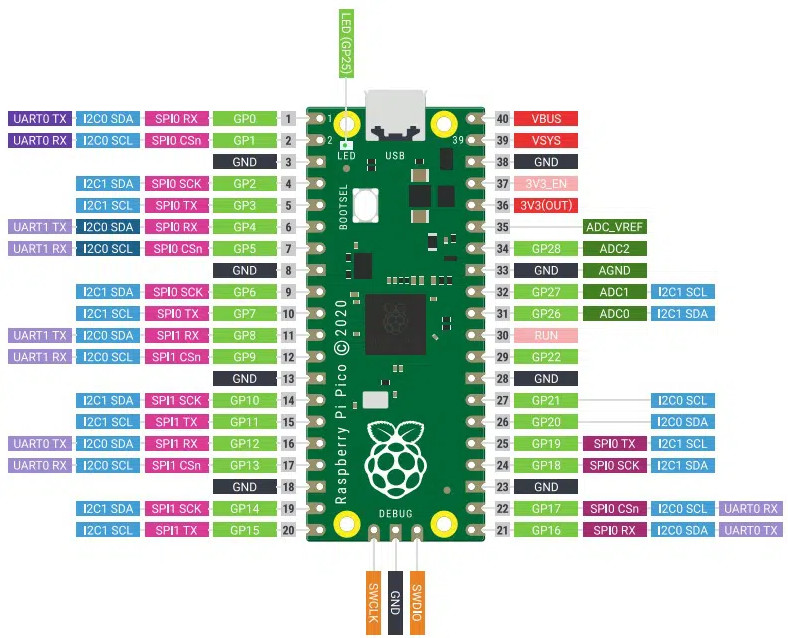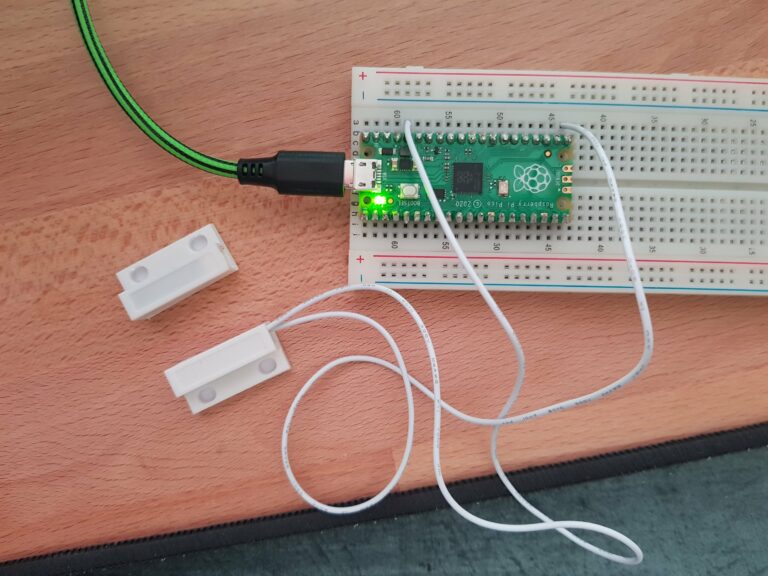A tiny multitalent: Raspberry Pico Pinout
The pinout of Pi Pico and Pico W are the same. Just the onboard LED has changed. See below.

from machine import Pin
Pin(25, Pin.OUT)from machine import Pin
Pin("LED", Pin.OUT)

As a software engineer I often write code that runs (hopefully) fine in the background, does its job and you probably never see it again. That dragged me to buy a unicorn hat for my first Raspberry Pico, as I’d like to see some fancy output of my spare time project. After some time of…

Thank you AZ-Delivery for this pinout! And thanks for best prices for this. They have got some really good offers here: https://amzn.eu/d/2ZqjALZ (no affiliate link) The onboard LED is at GPIO 2. Checkout Random Nerds Tutorials for which GPIOs to use.

Materials you need for this: LDRs (I am using 5528), breadboard, jumper wires, resistor (I used 56k) and a 5V power supply. The MicroPython code has been written for and tested on Pi Pico, Pi Pico W, D1 Mini and NodeMCU v3 ESP8266 .I bought it at berrybase.de and az-delivery.de (not referral links). The microcontrollers…

Great microcontroller, bought it at az-delivery.de (no ref link). The onboard LED pin is 2 (GPIO 4).

Jump to: Pico – D1 mini – Pi Zero Raspberry Pico A short Python implementation of a magnetic switch turning on a LED when it is not connected (e.g. window is opened). For simplicity reasons I used the builtin LED on the Pico. You have to use the pull=Pin.PULL_DOWN parameter for the input pin (sensor)….

Coming from a Java background, I really wanted to and now I am enjoying to learn Python. It is refreshing to see the simplicity and extensive built-in functionality. As I like to see the code working I got me a Raspberry Pico with pins and a Picorino Unicorn hat with a 16×7 RGB LED field…